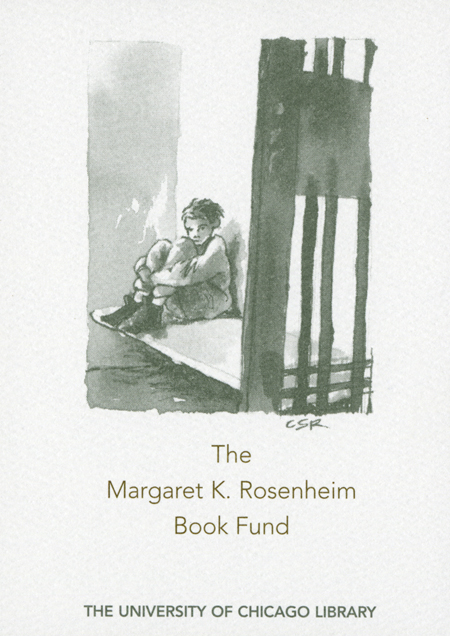Child protection : managing conflict, hostility and aggression /
Saved in:
| Imprint: | Bristol, UK ; Chicago, IL : Policy Press, 2013. |
|---|---|
| Description: | ix, 267 p. ; 24 cm |
| Language: | English |
| Subject: | |
| Format: | Print Book |
| URL for this record: | http://pi.lib.uchicago.edu/1001/cat/bib/9050065 |
Table of Contents:
- Acknowledgements
- Chapter 1. Introduction
- Aggression and social work internationally
- Failures in practice and training
- Using case studies to explore child protection practice
- Child protection and safeguarding
- Structure of the book
- Tensions in child protection practice
- Incidence of conflict in child protection
- Incidence of aggression against social workers
- Nature of abuse and violence against social workers
- Under-reporting of aggression against social workers
- Conflict and aggression in the workplace
- Health impacts on social workers
- Protecting social workers from aggression
- Points for practice
- Chapter 2. Theories of conflict and aggression
- Theory for conflict and aggression
- Definition of conflict
- Definition of aggression
- Passive-aggressive behaviour
- Biology and aggression
- Social learning theory and aggression
- Violation of social norms
- Frustration-aggression hypothesis
- Displaced and safety-valve aggression
- Stress
- Environmental stressors and aggression
- Stress and the social work role
- Gender and aggression
- Alcohol and aggression
- Drug misuse and aggression
- Mental health and aggression
- Social interaction theory
- Self-control and aggression
- Points for practice
- Chapter 3. Managing conflict with colleagues
- Conflicts in the workplace
- Case Study 3.1: Victoria Climbié
- The impact of underfunding
- Organisational structure and stress
- Physical working environment and stress
- Managing stress in the workplace
- Case Study 3.2: Peter Connelly
- Understaffing, staff turnover and workloads
- Information and communication technology
- Performance management
- Agency context and the fostering of conflict
- Addressing conflicts stemming from the agency context
- Integrative negotiation
- Conflict between individual social workers
- When negotiation fails
- Points for practice
- Chapter 4. Conflict with management
- Conflict with managers
- Case Study 4.1: Victoria Climbié
- Excessive caseloads
- Negotiating on workloads
- Inadequate supervision
- Negotiating with front-line managers
- Assertive, non-assertive and aggressive behaviours
- Socialisation and assertiveness
- Belief systems and assertiveness
- Non-verbal communication and assertion
- Case Study 4.2: Lost in care
- Conflict with front-line management
- Conflict with senior management
- Power relationships in the workplace
- When negotiation fails
- Points for practice
- Chapter 5. Conflict between teams and agencies
- Conflict between multidisciplinary colleagues
- Case Study 5.1: Victoria Climbié
- Conflict between social workers at Brent and medical colleagues
- Power in negotiations with multidisciplinary colleagues
- Making requests to others
- Conflict between social workers at Haringey and medical colleagues
- Self-assertion in integrative negotiation
- Assertive non-verbal communication in meetings
- Conflict between social workers and police colleagues
- Case Study 5.2: Child sexual abuse by foster carers
- Conflict between social work colleagues in different teams
- Addressing conflict between teams and agencies
- Latent conflict within and between agencies
- Anti-oppressive practice and professional self-assertion
- Points for practice
- Chapter 6. Conflict and substitute carers
- Conflict with substitute carers
- Case Study 6.1: Child sexual abuse by foster carers
- Non-compliance with a programme of activity
- Challenging substitute caregivers, parents and partners
- Building hostile alliances
- Bystanders and audiences
- Personal and professional self-confidence
- Self-esteem and social work
- The impact of aggression on social workers
- Hostage theory
- Learned helplessness
- Learned helplessness and hostage theory in practice
- Case Study 6.2: Ryan Lovell-Hancox
- Diversion by caregiver
- Resistant and reluctant caregivers
- Employing personal and professional rights
- Points for practice
- Chapter 7. Managing conflict with mothers
- Conflict with parents
- Case Study 7.1: Peter Connelly
- Parental background and aggression scripts
- Lying to professionals
- Investigative interviewing
- Disguised compliance by a parent
- Negotiating in bad faith
- Aggression towards professionals
- The failure to challenge
- Dealing with verbal detours and distractions
- Case Study 7.2: Ajit Singh
- Non-cooperation with child protection plans
- Games people play
- Use of complaints to obstruct intervention
- Complaints as aggression
- Giving constructive feedback
- Mental health of the mother
- Points for practice
- Chapter 8. Managing conflict with fathers
- Conflict with fathers
- Case Study 8.1: Richard Fraser
- The threat of violence
- Aggressive Incident Model
- The risk management of aggression
- Organisations and risk management
- Non-compliance with school attendance requirement
- Case Study 8.2: Ainlee Labonte
- Verbal aggression and physical violence
- Dealing with verbal aggression
- Preventing access to children
- Intimate child protection practice
- Anxiety management
- Points for practice
- Chapter 9. Managing conflict with children
- Conflict with children
- Case Study 9.1: Doncaster brothers
- Children's aggression scripts
- Aggression and anti-social behaviour
- Dealing with potential physical aggression
- Dealing with an imminent assault
- Experiencing an assault
- Case Study 9.2: The Pindown experience
- The anger of social workers
- Anger management
- The aggression of social workers
- The contribution of social workers to aggressive interactions
- Points for practice
- Chapter 10. Concluding remarks
- Conflict in child protection work
- Appendix
- References
- Index

